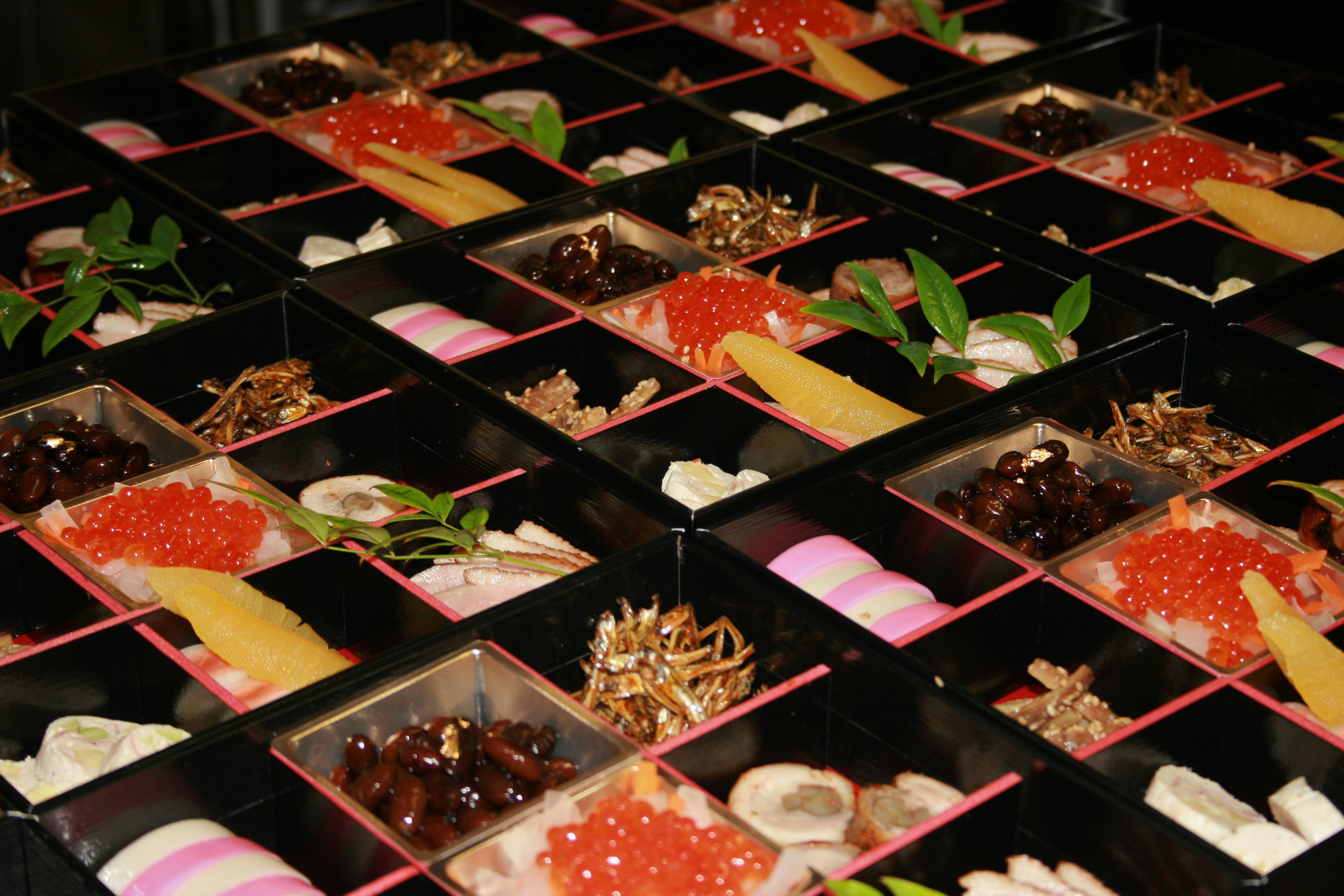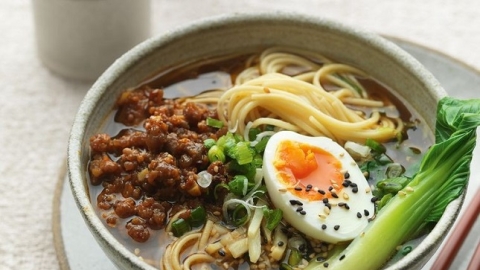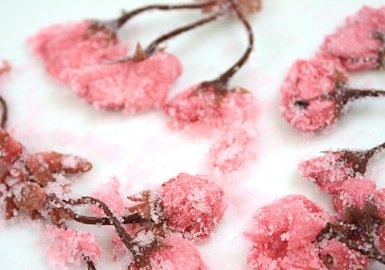Traditionally, Japanese families cook toshi-koshi soba noodles on New Year's Eve. They avoid leaving even a single noodle uneaten, as this is considered bad luck for the new year. In fact, because this noodle dish is easy to prepare, housewives have a free time. On New Year's Day, the whole family opens the jūbako tray to enjoy the special meal of the three traditional New Year days: osechi-ryōri.
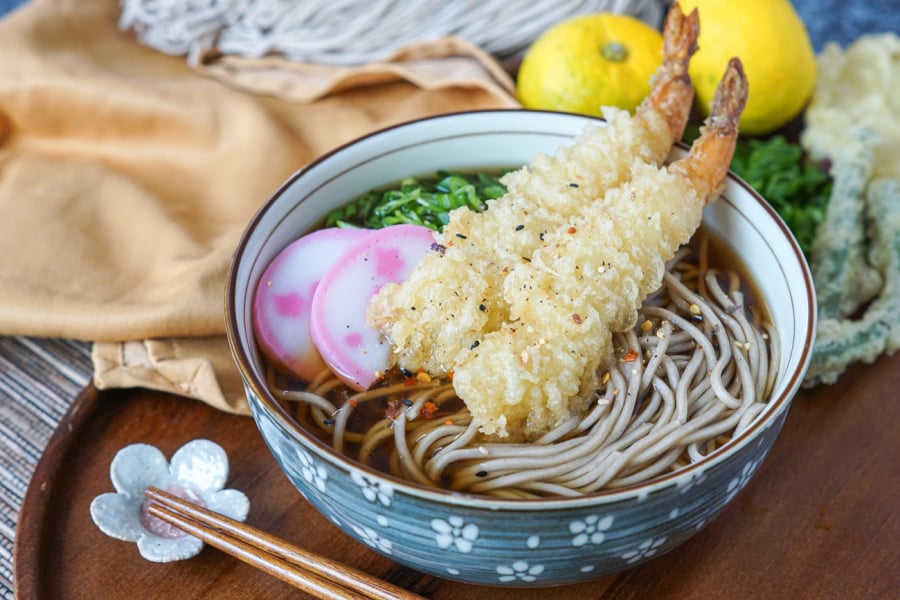
Long soba noodles symbolize longevity and vitality.
Osechi-ryōri is a Lunar New Year meal and a specialty in Japan, a tradition that began in the Heian period (794-1185). Osechi is served in a vermilion lacquered box called a jūbako. Inside, each ingredient and color has a blessing meaning and auspicious omen. The jūbako is similar in function to a bento box but usually consists of two, three or four stacked trays and is used only during the osechi meal. Once eaten, the jūbako is put away until the following New Year.
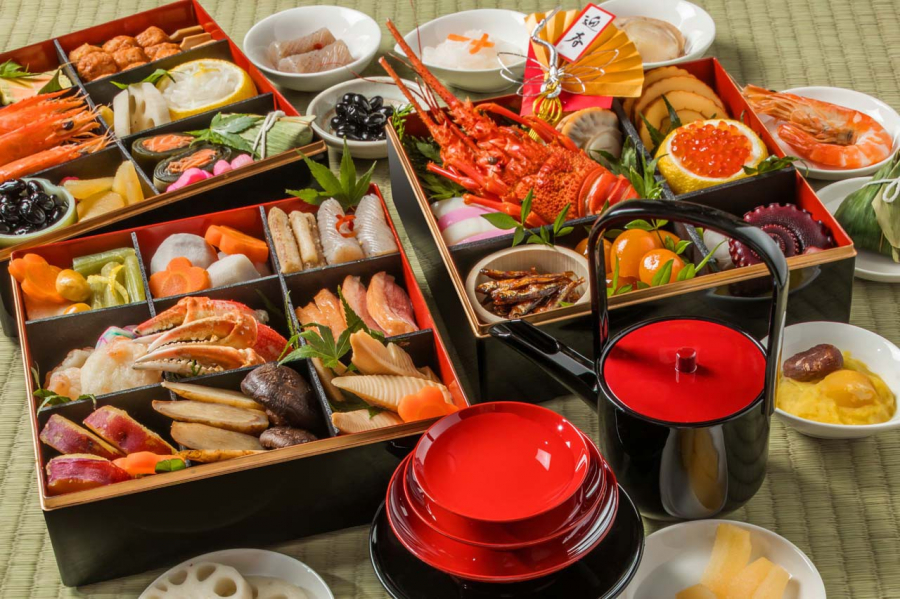
Osechi-ryōri meal

Jūbako tray
Depending on the region and family, the dishes, arrangement, and number of layers in the jūbako tray will be different. The four layers of the jūbako tray all have very special meanings, arranged in order from top to bottom, including:
- Ichi no Ju is like a New Year's blessing, including dishes with good meanings, used to accompany alcohol such as kuromame, kazunoko, tazukuri...
- Ni no Ju is famous for its sweet and savory dishes that both adults and children love, such as kobumaki, kurikinton, datemaki, etc.
- San no Ju is called "Happiness from the Sea" because the dishes on this tray are mainly grilled dishes with seafood ingredients such as shrimp, fish...
- Yo no Ju with the flavor of "Happiness from the mountains" with braised dishes made from vegetable ingredients such as lotus root, mushrooms, carrots, burdock root...
Not only that, each dish in an osechi-ryōri meal has a special meaning to welcome the new year.
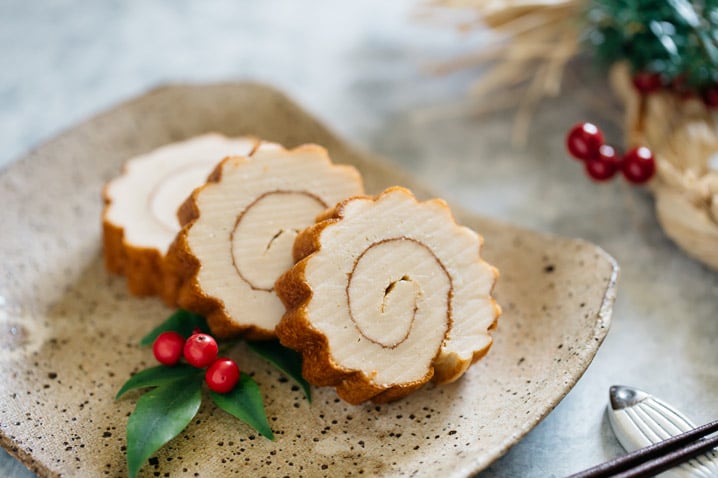
Datemaki: "datemaki" means "roll", and is an omelet rolled with fish paste or mashed shrimp. It is a play on the homophones "date/y" 伊 and "y" 衣 which means "clothing", with the intention of wishing for gorgeous clothes.
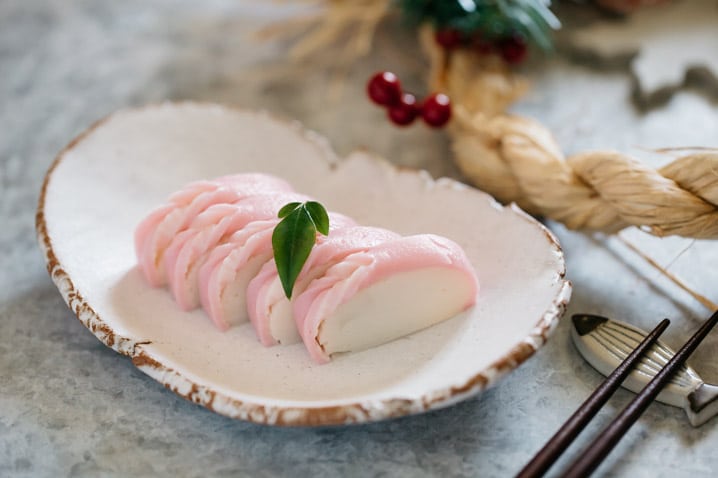
Kamaboko: boiled fish cake. This is minced fish, boiled and then cut into pieces. This fish cake is usually dyed pink on the outside and white on the inside, so when cut, both colors appear. In the jūbako tray, kamaboko is artistically arranged in layers.
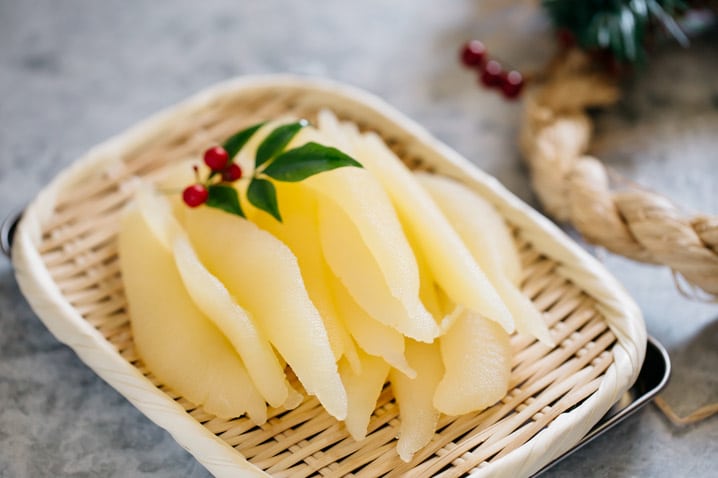
Kazunoko: herring roe dish. Kazu means "number" and "ko" means "child". This dish symbolizes the wish to have many children and grandchildren.
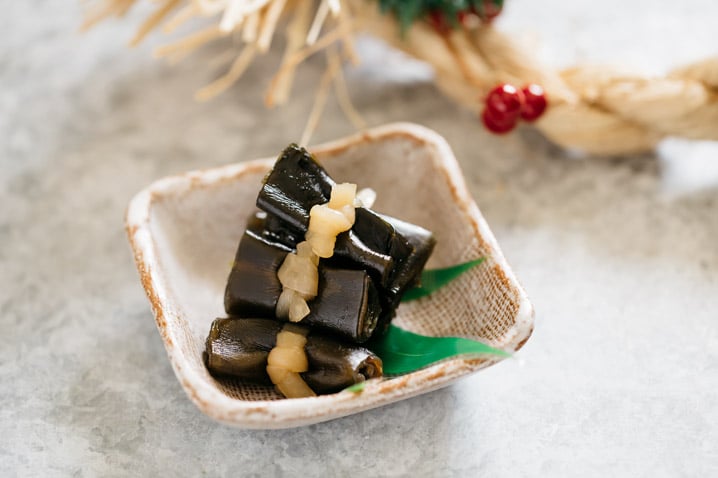
Konbu: Konbu, a type of seaweed. The sound evokes yorokobu (joy), which means "joy".
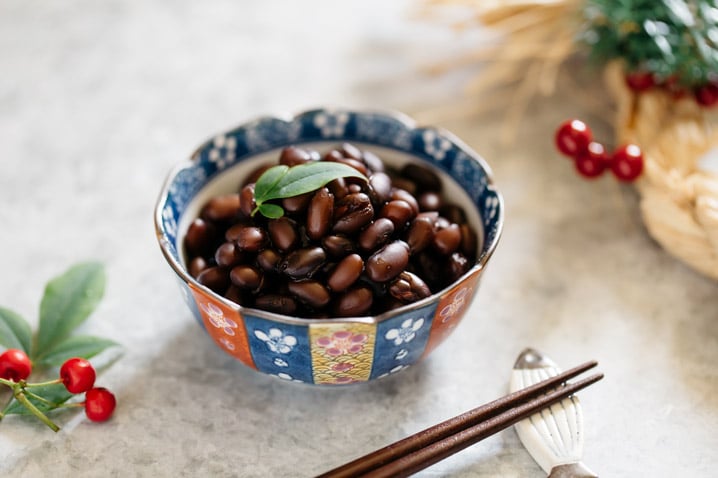
Kuro-mame: black soybeans. Mame also means "healthy" and symbolizes wishes for good health in the new year.

Kohaku-namasu: means "red and white pickled vegetables". This dish is shredded carrots and radishes marinated in yuzu (a hybrid of a mandarin orange and a lemon) juice. The traditional colors of red and white in Japan represent the joy of the harmony of yin and yang.
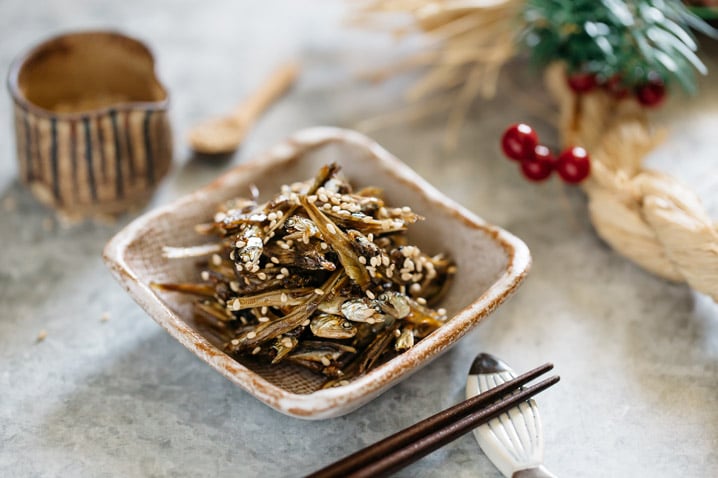
Tazukuri: dried sardines braised in soy sauce. When written in kanji, the dish means "farming." For farmers, this is a wish for a good harvest.

Zōni: rice cake soup, similar to Korean tteokguk or Vietnamese rice cake but salty because it is cooked with broth or miso water.
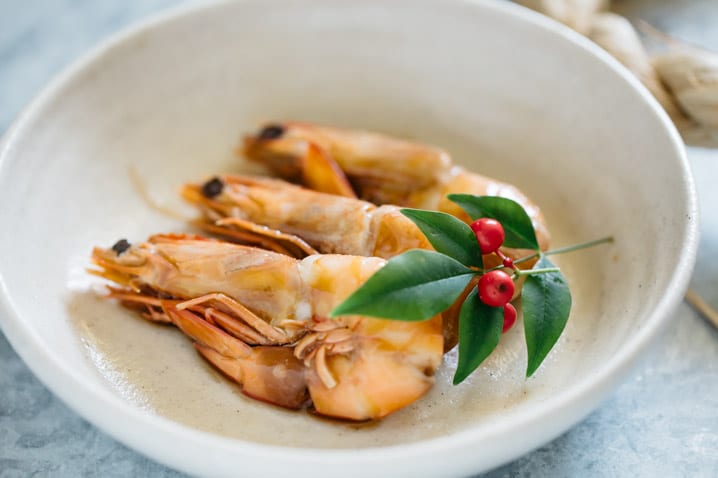
Ebi: shrimp simmered in sake and soy sauce.

Nishiki tamago: rolled omelet, but the egg white is rolled separately, the yolk is rolled separately, then rolled. The yellow and white colors symbolize gold and silver, wishing for wealth and prosperity.
Originally, osechi was called o-sechi withois an honorific prefix andsechiis a season; the Vietnamese equivalent is "Tet". In the past, osechi only had nimono, vegetables boiled in soy sauce mixed with sugar or mirin. As time went by, the number of dishes in osechi meals gradually increased. Except for zoni, which requires boiling broth, the remaining dishes are eaten cold to reduce cooking.
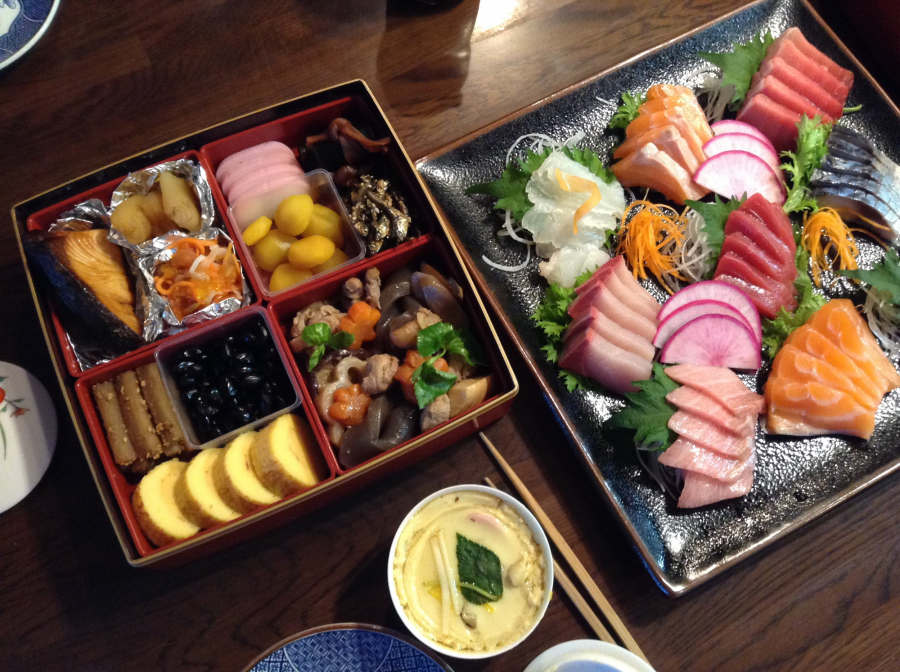
Ready-to-eat osechi-ryōri boxes
Nowadays, osechi includes many special dishes, divided into seiyō-osechi (Western imperial dishes) and chōsen no osechi (Korean imperial dishes). Actually, osechi is a type of home-cooked meal, prepared for New Year's Day, but today, many stores, including 7-Eleven, sell osechi sets in beautiful boxes, customers just need to buy them, open them and eat.
In particular, in addition to preparing osechi-ryōri dishes for their families, Japanese people also use osechi-ryōri as a New Year gift with the wish to wish the recipient all luck and success.





